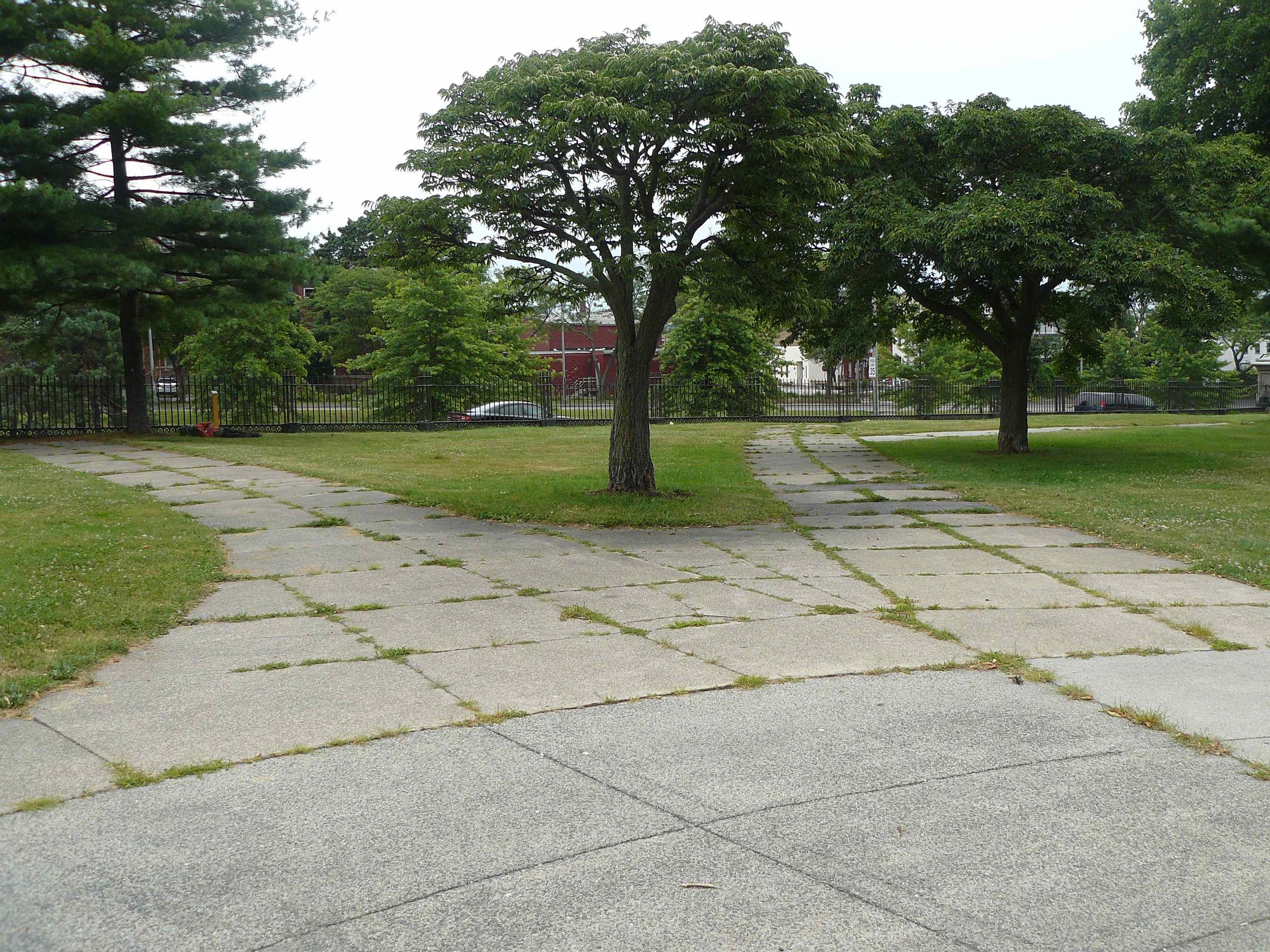Lincoln Park
Congress and Franklin Streets, Portland | Nominated to Places in Peril in 2013
THE ISSUE
Lincoln Park is at a tipping point that will determine its future. Years of neglect, lack of investment, and harsh New England winters have taken their toll, harming the Park's appeal to the general public. The park needs significant repair to its original circulation paths, landscape furniture, perimeter fencing and fountain to ensure its integrity.
In the past, the park was heavily used by the public, but more recently it has been largely abandoned. In 2012, the park gained notoriety as the site of Occupy Portland's winter encampment. Later that year, a group of concerned citizens formed Friends of Lincoln Park, a new organization to advocate for the preservation of the park.
In 2009, the City of Portland began considering a redesign of Franklin Street, a 1970s urban arterial connecting I-295 with the waterfront whose construction appropriated the eastern third of the park. The reconfigured Franklin Street will enhance the urban fabric of the city through the mixed-use development of residential, commercial and recreational space amid attractive streetscapes and possibly restore land taken for the creation of the arterial to Lincoln Park. Currently, the City of Portland has developed a sustainable neighborhood plan, adopted new zoning, and created a local historic district for the India Street neighborhood. In addition, the City has adopted a plan for the future of the Franklin Street Arterial, which includes a recommendation to restore the park to closer to its to its original configuration prior to its reduction in 1970.
Our Position
Lincoln Park is Portland's oldest public park. It was designed by Portland's civil engineer Charles Goodell and was strategically plotted as a protective fire-break in reaction to the Great Fire of 1866. Lincoln Park served as the green space for a densely populated neighborhood at the base of Munjoy Hill and a place of respite for downtown workers. Bounded by Congress, Pearl, Federal, and Franklin Streets, it was placed on the National Register of Historic Places in 1989 for its significance in landscape architecture. It is also recognized as a local Portland Historic Landscape District. Lincoln Park was named to the 2013 Places in Peril list due to long standing neglect of the park infrastructure and lack of city funding for maintenance and repair.
As part of the plans to redesign the arterial, Landmarks has been advocating for the restoration of land to the park, new development in the vicinity of the park to encourage use of the green space, and the reconnection of Federal and Newbury Streets across Franklin Street to reknit the urban fabric of the neighborhood. Landmarks will work with the Friends of Lincoln Park to help build awareness and support the park at a time when it could be possible to restore the park to its original plan. The Friends of Lincoln Park has worked with the City of Portland to develop a master plan for Lincoln Park, raised funds to restore the historic fountain, and repairs to the walkways in the park. Additional funds have also been raised to fund the phased restoration of the park’s perimeter fence.
Update
Friends of Lincoln Park and the City of Portland have successfully restored the French fountain, repaved the paths, installed new benches, and revitalized the gardens.
PRESS
Union Station clock in Congress Square, Lincoln Park among imperiled Portland Landmarks
Bangor Daily NewsRevitalization effort focuses on Lincoln Park
Portland Press HeraldChance Discovery gets Lincoln Park Fountain Restoration Flowing
Forecaster
QUICK LINKS
About Lincoln Park LoveLincolnPark.org
Learn more about plans for an art installation in Lincoln Park TempoArt Maine.org
WHat You Can Do
Join our mailing list to stay informed about our advocacy efforts, educational programs, and upcoming events.
Support Landmarks by becoming a member or making a donation today.








